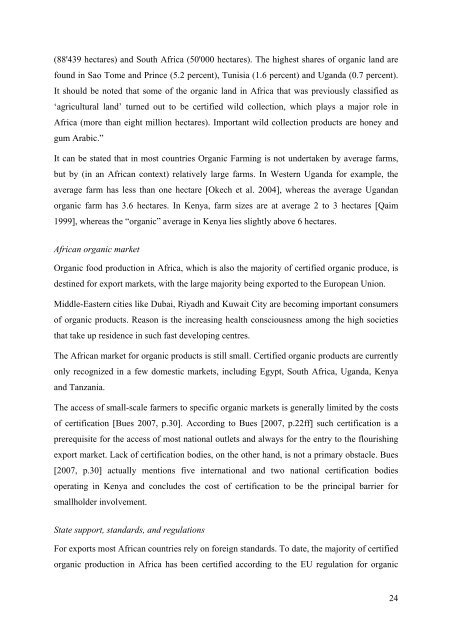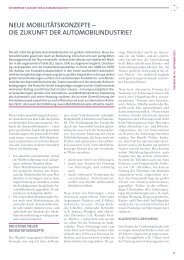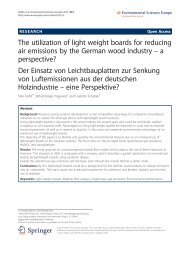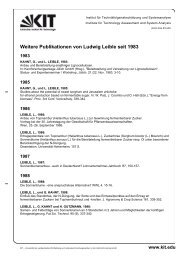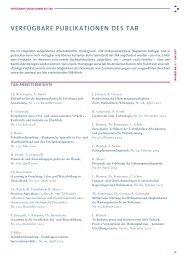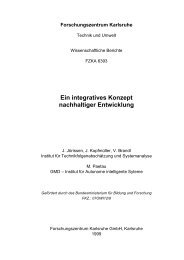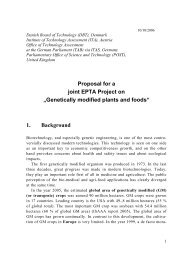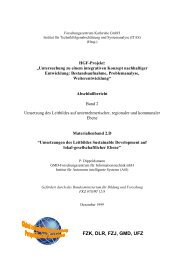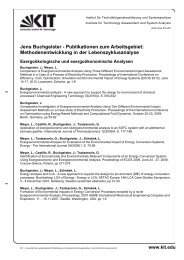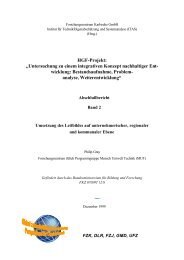Annex 4: Case study âOrganic Farmingâ - ITAS
Annex 4: Case study âOrganic Farmingâ - ITAS
Annex 4: Case study âOrganic Farmingâ - ITAS
Create successful ePaper yourself
Turn your PDF publications into a flip-book with our unique Google optimized e-Paper software.
(88'439 hectares) and South Africa (50'000 hectares). The highest shares of organic land are<br />
found in Sao Tome and Prince (5.2 percent), Tunisia (1.6 percent) and Uganda (0.7 percent).<br />
It should be noted that some of the organic land in Africa that was previously classified as<br />
‘agricultural land’ turned out to be certified wild collection, which plays a major role in<br />
Africa (more than eight million hectares). Important wild collection products are honey and<br />
gum Arabic.”<br />
It can be stated that in most countries Organic Farming is not undertaken by average farms,<br />
but by (in an African context) relatively large farms. In Western Uganda for example, the<br />
average farm has less than one hectare [Okech et al. 2004], whereas the average Ugandan<br />
organic farm has 3.6 hectares. In Kenya, farm sizes are at average 2 to 3 hectares [Qaim<br />
1999], whereas the “organic” average in Kenya lies slightly above 6 hectares.<br />
African organic market<br />
Organic food production in Africa, which is also the majority of certified organic produce, is<br />
destined for export markets, with the large majority being exported to the European Union.<br />
Middle-Eastern cities like Dubai, Riyadh and Kuwait City are becoming important consumers<br />
of organic products. Reason is the increasing health consciousness among the high societies<br />
that take up residence in such fast developing centres.<br />
The African market for organic products is still small. Certified organic products are currently<br />
only recognized in a few domestic markets, including Egypt, South Africa, Uganda, Kenya<br />
and Tanzania.<br />
The access of small-scale farmers to specific organic markets is generally limited by the costs<br />
of certification [Bues 2007, p.30]. According to Bues [2007, p.22ff] such certification is a<br />
prerequisite for the access of most national outlets and always for the entry to the flourishing<br />
export market. Lack of certification bodies, on the other hand, is not a primary obstacle. Bues<br />
[2007, p.30] actually mentions five international and two national certification bodies<br />
operating in Kenya and concludes the cost of certification to be the principal barrier for<br />
smallholder involvement.<br />
State support, standards, and regulations<br />
For exports most African countries rely on foreign standards. To date, the majority of certified<br />
organic production in Africa has been certified according to the EU regulation for organic<br />
24


